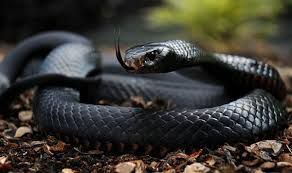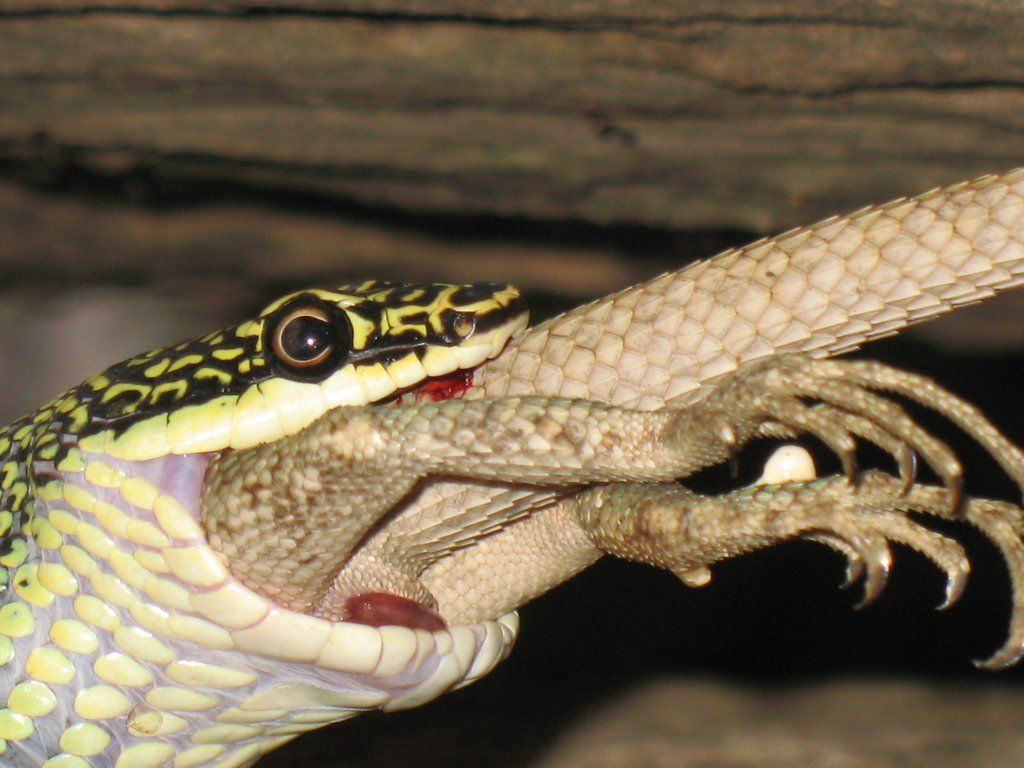Are snakes dangerous?
The asp is a poisonous snake related to the cobra.
Cobra is a poisonous snake of hot countries of the slate family, with spots below the head.
Coral adders are small, spectacularly colored snakes.
Reptiles (reptiles) are a class of vertebrate animals that move primarily by crawling or dragging their bellies along the ground (snakes, lizards, crocodiles, turtles).
Poison is a substance that causes poisoning.
Snakes, lizards, crocodiles, alligators and turtles form the class of reptiles, but are close relatives of birds and mammals. The main difference between them is that reptiles are cold-blooded, that is, their body temperature depends on the temperature of the environment. Therefore, in order to function normally, they need warmth, and this greatly limits their ability to survive in cold climates.
The skin of reptiles is dry and covered with scales. Small reptiles hatch from eggs and differ from adult individuals only in size.
Many people are afraid of snakes, although most of these reptiles are completely harmless. They live on land and in water, crawl and swim quickly, hunt insects and small rodents - rats, mice, moles, etc. But some snakes are really dangerous. For example, viper, cobra and rattlesnake: their teeth contain strong poison, when bitten it enters the victim’s body and kills it. Snakes use this venom not only for hunting, but also for protection against enemies larger than themselves. The bite of a poisonous snake is often fatal to humans.
In our work, we will look in more detail at the lifestyle of the king cobra and coral adder, and find out how dangerous they are to others.
The king cobra, or hamadryad, is the world's largest venomous snake, the venom of which has a strong nerve-paralytic effect. Average length: 3.5 – 4m. Maximum length: 5.58 m.
A person dies from a cobra bite within 15 minutes. The snake is especially aggressive during the “nesting” period. An Indian elephant dies within three hours after a cobra bite if the bite occurs in a sensitive place (the end of the trunk).
The king cobra is much less common than its smaller relatives. Quite often it can be observed in the dense forests of the mountainous part of South Asia and in the mountains of India at an altitude of up to 2000 m above sea level. King cobras are active in both daylight and darkness, but are more common during the day.
Not everyone is able to see the king cobra, because it is very shy, behaves quietly and often hides in inaccessible areas. The king cobra often settles near bodies of water.
Life expectancy: 20 years or more.
Food
The King Cobra is a dangerous opponent. She leads a predominantly diurnal lifestyle. The king cobra feeds on other snakes, for example, pythons, colubras, other types of cobras, as well as large monitor lizards. The king cobra hunts using its sense of smell: it records odors with its forked tongue and transfers them for analysis to a special organ located under the palate (Jacobson's organ).
Near the victim, the king cobra is guided only by its vision. It kills prey with the bite of its poisonous teeth. The king cobra squeezes its wounded but still living prey in a “deadly embrace,” that is, it wraps itself around its body. Snake venom paralyzes large prey for a longer time.
The king cobra does not have limbs with which it could tear its prey into pieces, so it has to swallow the victim whole. Thanks to the movable lower jaw, the bones of which are connected to each other by elastic ligaments, the snake is able to swallow prey much thicker than its head. Next, the prey is pushed through the movements of the jaw bones into the stomach, while the skin on the snake’s body stretches, revealing the size of the swallowed prey. Swallowing a large prey can last several hours, but then the cobra is able to go without food for several weeks.
Reproduction
At the beginning of the mating season, the king cobra sheds its old skin. The female’s body begins to produce pheromones - biologically active volatile substances that influence the activation of the males’ sexual desire. During mating, the male and female intertwine their bodies, remaining in this position for quite a long time. King cobras form pairs, build nests, and care for eggs. The female lays her eggs in the center of the leaf pile. King cobras lay 20 to 40 white eggs. The male lies close to the nest, protecting it from predators, and the female lives in the upper part of the nest, curled up under a layer of leaves. After 60-70 days, young cobras hatch from the eggs and immediately crawl around the surrounding area in search of food.
King Cobra and Man
An unexpected encounter with a king cobra can result in the death of a person. The cobra's rather small teeth inject a significant dose of venom into the victim's body - more than the king cobra; only the Gaboon viper produces venom. There are known cases where elephants died from a cobra bite. King cobras are especially dangerous during the breeding season. In India, for example, when an abandoned snake nest is discovered, the police immediately cordon off the entire area. Villagers tell many stories about people being persecuted by cobras, which contain a lot of fiction.
Coral adders have a highly toxic poison that affects the nervous system of the victim and immediately kills the animal. Thanks to their poison, they hunt snakes of the same size as themselves.
The bright coloring of coral adders serves as protection from enemies. The skin of non-venomous asps is covered with the same rings as those of dangerous species - thus, defenseless snakes camouflage themselves, wanting to deceive predators. An example of such camouflage is the American snake, the color of which is identical to the color of the dangerous coral adder. Colour: As a rule, the transverse rings are red, white, yellow and black. Length: females up to 100 cm, males 60 cm.
Habitat
Coral adders are small, spectacularly colored snakes. Coral adders, which avoid open places, live in deciduous forests where there are many stumps left after cutting down trees. They live in the mountains, preferring crevices and ledges. Coral adders move under the roots, in the litter, and burrow into the ground during the day. Habitat: North, Central and South America.
Snakes need shelters for resting, raising offspring, and also places where they can ambush while hunting. During the day, coral adders hide, and at dusk they again go hunting for prey.
Food
Coral adders feed on small species of snakes, but can also attack members of their own species and larger snakes. They hunt lizards, amphibians, rodents, chicks and insects.
Twice a year - from September to November and from April to May - adders eat especially a lot. The mouth of asps is small and weakly extensible. The upper jaw is armed with two poisonous teeth. Adders have short teeth, so reptiles bite their prey several times.
The poisonous teeth of asps have deep grooves through which poison from the salivary glands is introduced into the victim’s body.
Reproduction
Coral adders mate twice a year: from late spring to early summer and from late summer to autumn. Males are able to mate all year round, females lay eggs in June-July. The readiness of males to mate at any time is very important, since coral adders do not occupy certain territories, settle at a great distance from each other, and therefore are rare. Males with poor eyesight have difficulty finding females. Coral adders are generally distinguished by aggressive behavior, and instead of mating, a duel often occurs between individuals of different sexes. But, despite this, coral adders also have a mating ritual: before mating, the male sticks out his tongue and strokes the female’s back with his nose. In June-July the female lays eggs. The length of each egg reaches 4 cm. After two months, the cubs are born. Each of them is the size of an earthworm. From birth, small snakes are painted in protective colors; in addition, they have well-developed teeth and poisonous glands, so they successfully use them just like adults.
Coral adder and man
The bite of coral adders is fatal to humans. A dose of 5-10 mg of poison kills an adult. The venom of coral adders has a nerve-paralytic effect and affects the heart muscle. It contains hemolysins, which destroy red blood cell membranes, resulting in the release of hemoglobin into the surrounding solution. A snake bite is not painful, rather stinging, and the effect of the venom begins to appear within 30-60 minutes, and sometimes even several hours after the bite. Coral adders themselves attack humans only in exceptional cases; usually bitten people provoke the snakes, forcing them to defend themselves.
Why are coral snakes so brightly colored?
It's impossible to miss the coral snake with its striking red, black and white stripes. The bright coloring warns animals that the snake is poisonous and could harm them if they attack it. Warning coloration keeps predators at bay and helps the coral snake avoid danger.





No comments here yet.